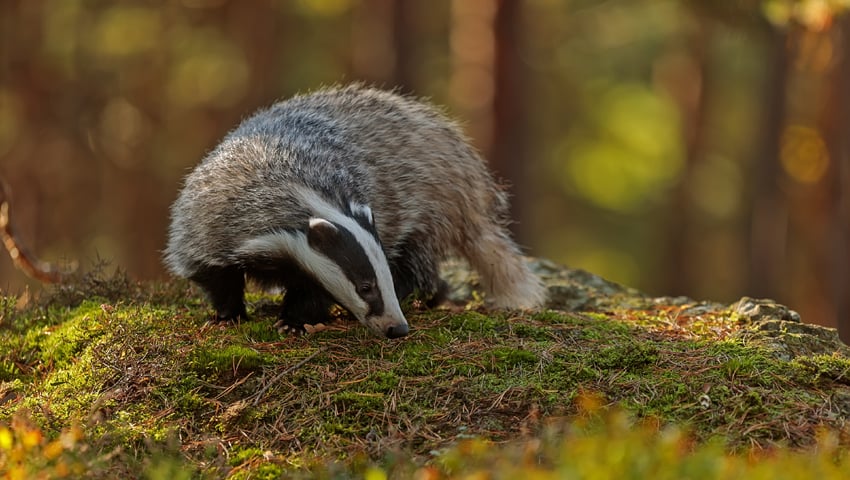FAI Farms is adjacent to Wytham Woods in Oxfordshire, which has one of the greatest densities of badgers in Europe. But in an interview with the Farm Gate podcast, Silas Hedley Lawrence, farm manager at FAI Farms, said that while TB is a risk, it’s one that he’s able to take proactive steps to mitigate.
Episode 92 of the Farm Gate podcast, “Outwintering cattle”, will be released on 8.9ha on Friday 21st April.
Despite the close proximity of a large badger population, FAI Farms has decided to adopt an adaptive multi-paddock system and to keep their cattle outside all year round. The AMP approach means that FAI are now able to run more cattle, but because the herd is in constant contact with wildlife, the presence of TB has limited their ability to grow the herd as rapidly as planned.
To mitigate the TB risk, Mr Hedley-Lawrence says that he and the farm team have learned new techniques to help them live productively alongside the badgers.
“We’ve identified where the badger setts are – whenever we go into fields or new cells, alongside the usual checks, we look for latrines. When we find a latrine or a sett we fence them off and try and reduce the amount of interaction that the cattle could have in those more high risk areas.
“We don’t use a lot of minerals, just some seaweed at key points of the year and some rock salt. In the old days these were dragged around on custom-made mineral feeders, while now we’ve elevated those to be over a metre high on some stilts and skids.
“The water also moves with the cattle and it’s tipped out every day. TB can stand in water for six months or more, so if you’ve got a water trough that deer or something have had access to, or badgers have been able to reach into, then that could be a potential risk for six months, but tipping the water out every day as we move helps mitigate that.”
Mr Headley-Lawrence views badgers as part of the surrounding biodiversity rather than an impediment to the farm’s long term productivity.
“It comes back to this whole holistic view. If we have a healthier farm and a healthier ecosystem, with more energy and carbon and water, and with minerals going through our soils and pastures and the surrounding biosphere, then the wildlife, as well as our cattle, should become healthier. They should have better immune systems, so the rate at which the wildlife picks up the TB should hopefully drop if we can help make them healthier too.
“We do things like put rock salt out near badger setts – to help them be a bit healthier, but also if they’ve got salt where they need it then they won’t come looking for it where we have it.”
The cattle at FAI are one hundred per cent pasture fed. Mr Hedley-Lawrence said “we’ve moved away from finishing on grains or concentrate, which means that we’ve also removed those more tempting feed options that the badgers had become accustomed to.”
